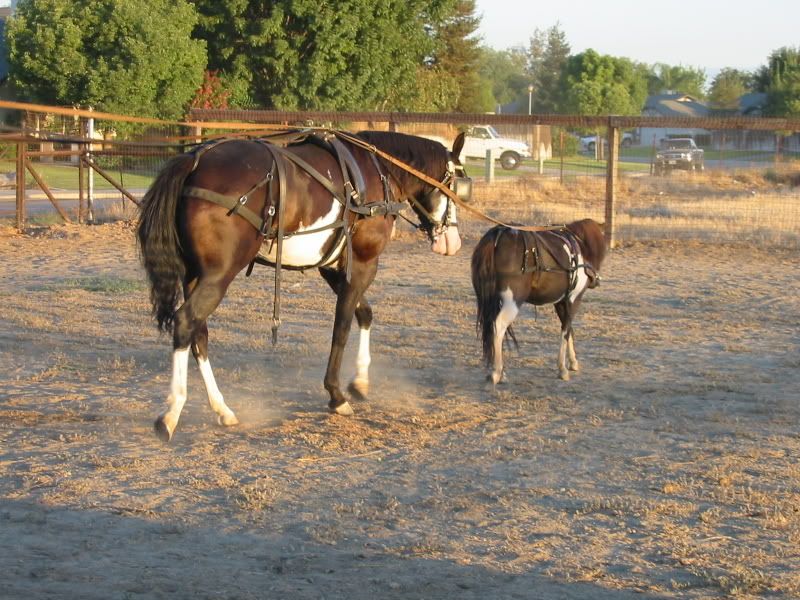Tandem is a heck of a lot of fun! In fact, I prefer it to pairs and fours....one for the equipment factor, and one for the fairly high sensitivity of connection (both horses have both reins going directly to your hands.
A few simple ground rules:
-only drive tandem when you have someone else there that is ready and able to help! Most instances, you should be able to untangle them on your own, but sometimes it all hits the ceiling fan and it is much better to have someone there to contain at least one horse. This is important...it is very unnerving to be 'stuck' in a moving cart because the wheeler is freaking out and deciding his best option is forward, and the leader is wrapping himself up and panicking because he's caught up in the traces and reins.
-make sure both your horses are well trained to voice commands, especially 'forward' ones and the all important Whoa.
-lastly, make sure they are both totally ok with straps around their legs, getting wrapped up, getting bumped by the other horse or the shaft, etc, etc. It is not fun driving a wheeler that freaks when he gets a leg over the leader's trace because the leader slowed down/shied/doesn't want to go where you are pointing, etc.
Despite the scenarios that I've outlined here, tandem is generally very safe, and very fun...but when things go wrong, sometimes it is worse than a single. It helps that minis are small, the horses make it more difficult when they panic. NOT trying to scare you away, just saying be aware, be patient and calm, and have a helper available.
On to your questions:
Generally, both you and Andrea are correct, the smaller, flashy, lighter one should be in front, but sometimes it just doesn't work that way. Quite honestly it doesn't matter for you which way you go. But I would recommend the one that is more responsive (forward is your friend with tandems!!), but is very safe and sane about getting tangled up and less likely to duck out on you (like Andrea said). Your front horse is bold, forward, but sensible and willing to listen.
I often start my tandems by driving the intended wheeler and grounddriving the leader as if they were in a tandem, but one person is on the ground with the leader, and one in the cart, and the two horses are not attached. This way you can assess how ok the leader will be with a cart and horse behind him, and what the wheeler thinks about being the follower. I will also ground drive them together in tandem so you don't have any cart complication if something goes wrong...but this can backfire on people and sometimes I don't do it, as the horses' walks are usually not similar enough initially to not be having issues (leader going too slow b/c confused, turns and looks, etc). A header for the leader helps immensely at this point.
I will get some pictures uploaded and put them on here soon. The great thing about tandem is you really don't need much beyond two single harnesses.


























































